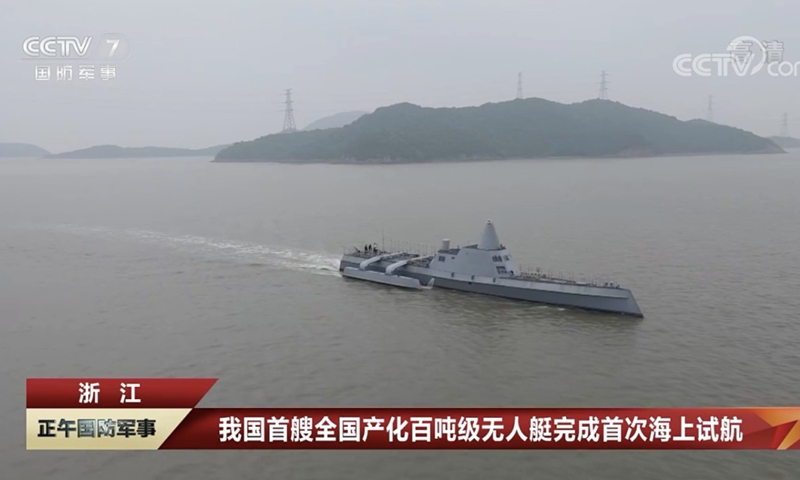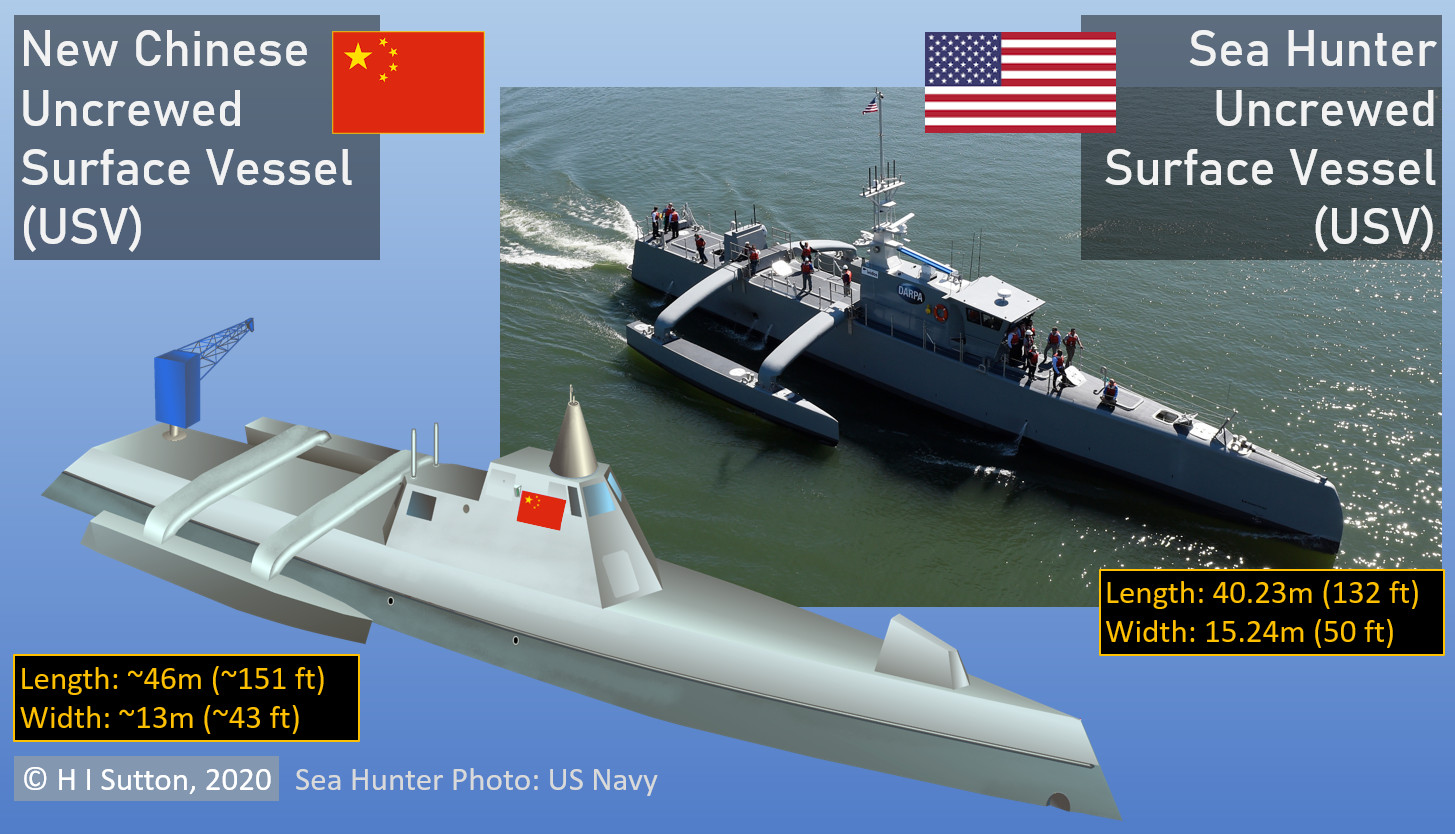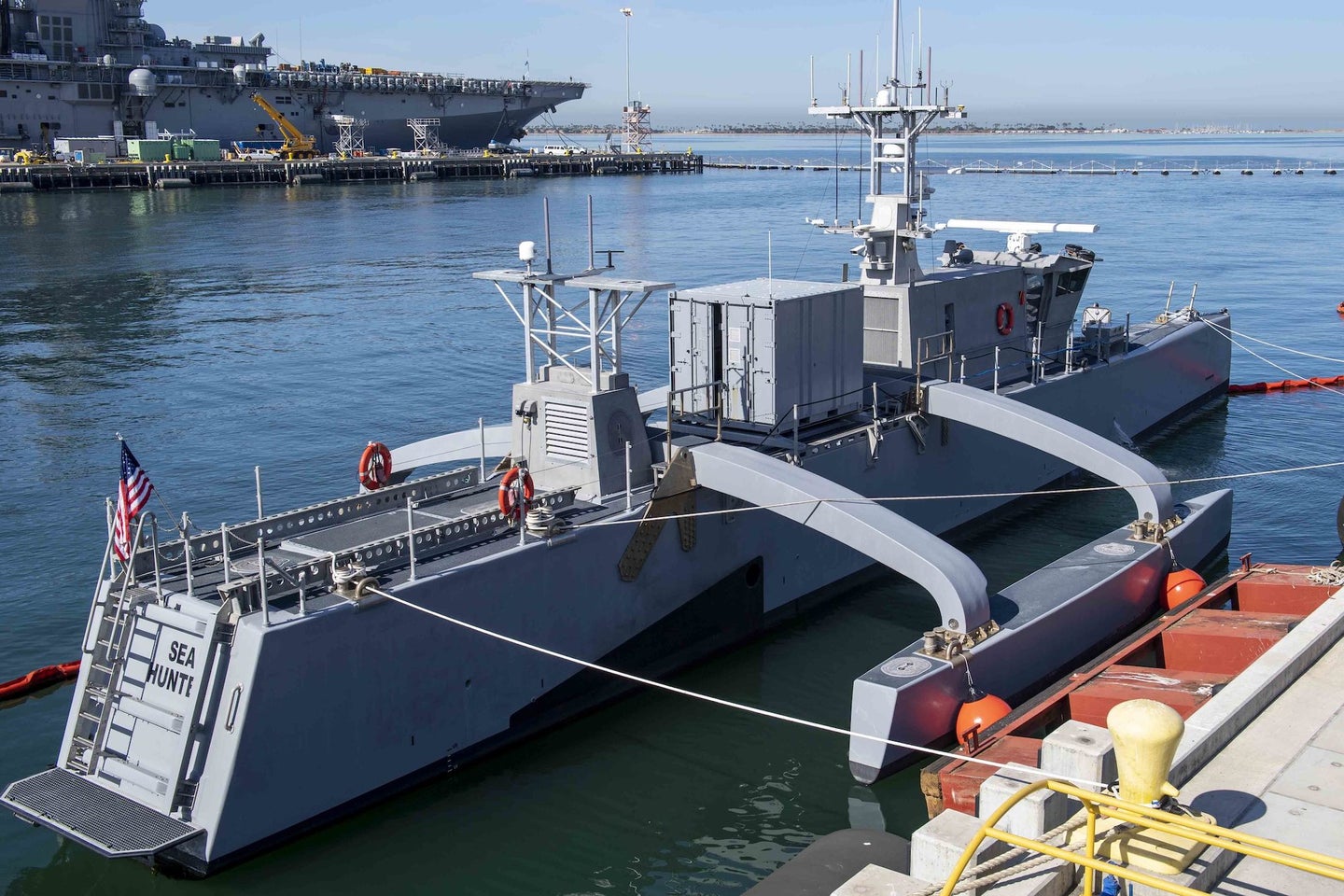China’s first domestically manufactured 200-ton-class unmanned surface vessel (USV) has reportedly completed its maiden autonomous sea trial, potentially paving the way to employ new naval combat tactics such as distributed operations and swarm battle.
First-Ever F-35, J-20 Encounter — After A Near Miss, US ‘Replicates’ Chinese Stealth Fighters To Battle USAF Warplanes
The ship is distinguished by its stealth and long-range capabilities. On Tuesday, a sea trial was held at Panzhi Island in Zhoushan, Zhejiang Province, East China. The trials were successful after three hours of data collection, state-run media outlet – Global Times reported.
The trimaran-style vessel has a displacement of around 200 tonnes and a length of more than 40 meters. Depending on the operational conditions, the vessel can attain speeds of 20 knots or more. The autonomous vessel is built to sail in a sea state six, which means it can navigate in ‘very rough waters’.
The vessel’s detection range, stealth capability, integrated power system, and comprehensive environmental awareness, among other technical aspects, are believed to be best in class, Beijing claims.

“The voyage results are almost identical to what we expected. Next, we will conduct collision avoidance tests for the drone ship and further examine the vessel’s performance,” said Zou Long, the on-site leader of the project.
The USV was reportedly domestically built by Zhejiang North China Intelligence Technology starting in late 2015 in order to fulfill a desire for a stealthy USV with high-performance navigation and intelligence capabilities.
The ship was officially launched in Jiujiang City, Jiangxi Province in August 2019, and a series of tests were done on Lake Poyan, purportedly to validate the USV’s autonomous navigation capabilities.
Russia’s ‘Most Powerful’ Submarine Base Is Shockingly Painted With A Gigantic Artwork Of US Attack Submarine
A Beijing-based military expert told the Global Times, “With characteristics like outstanding stealth and high situational awareness, the drone ship could see military applications and provide many new tactics in naval warfare.”
The drone ship can be deployed into dangerous combat zones to conduct reconnaissance, anti-submarine, anti-aircraft, or anti-ship operations with the appropriate equipment, the Chinese Expert said.
The Expert further explained that a flotilla of bigger warships with crews at sea can use a group of drone ships as vanguards or scouts for coastal defense. They can be spread out and carry out distributed operations, making it difficult for foes to eliminate them one by one, or they can form a swarm and overwhelm the enemy.
The first indications of this vessel’s existence surfaced in 2020 when independent defense analyst H I Sutton presented new evidence of the USV’s presence at a Chinese port.

Sutton’s follow-up article in 2021 used satellite images to determine the USV’s location outside a Chinese shipyard, where it was most likely housed until proper tests could be conducted.
Similar To US Navy’s Sea Hunter?
China’s vessel is strikingly similar to the US Navy’s Sea Hunter. Technically, both were built with a triple-hull design and autonomous navigation capability. However, there are subtle structural distinctions that assist in differentiating the two.
The Sea Hunter is approximately 132 feet long, has a full load displacement of 145 tonnes, a top speed of 27 knots, and is designed to operate through sea state 5. The Chinese variant has a conical mast and an angled deckhouse, whereas the Sea Hunter has a more conventional design.

Sea Hunter was built as part of a project aimed at hunting enemy submarines, which is also one of the principal missions of the stealthy Chinese USV. However, newly built USVs such as its sister ship Sea Hawk are capable of general intelligence gathering, manned-unmanned teaming, and serving as weapons platforms.
The United States military has begun incorporating unmanned surface vessels into its activities. For instance, Sea Hunter and Sea Hawk will take part in the upcoming RIMPAC wargames, which will begin soon off the coast of Hawaii.
As previously reported by the EurAsian Times, China launched another autonomous vessel, the Zhu Hai Yun, in May of this year, with the intention of using it as a “drone ship” for marine research.
The Zhu Hai Yun is regarded as a mothership because it is outfitted with drones, unmanned ships, and submersibles, as well as numerous systems and three-dimensional surveillance capabilities.
In a military setting, Zhu Hai Yun could be just as useful as a hub for numerous unmanned weaponry and surveillance systems. However, it remains to be seen if China’s new USV will be a success or how much it will contribute to Chinese military combat activities.
- Contact the author at ashishmichel@gmail.com
- Follow EurAsian Times on Google News





